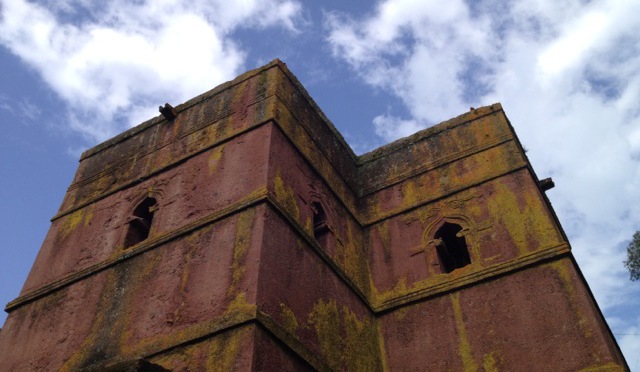From Gondar, we flew to Lalibela, home of some of Ethiopia’s most incredible rock-hewn churches.1 The Church of Saint George is the Pinterest darling (and most often photographed) of the bunch, but the other ten churches in the complex are jaw-dropping in their own right.
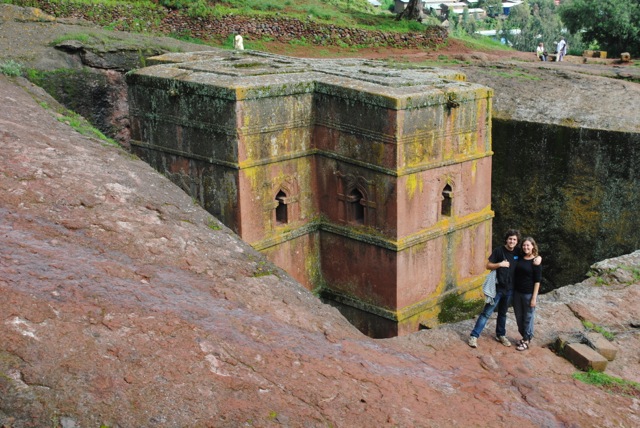
Amazingly, the churches are carved directly out of the rock. Rather than cutting building blocks to be constructed into buildings, the creators cut away the negative space, essentially “freeing” the churches from solid rock. No matter how many pictures you see of the churches of Lalibela, nothing can prepare you for actually seeing them in person.
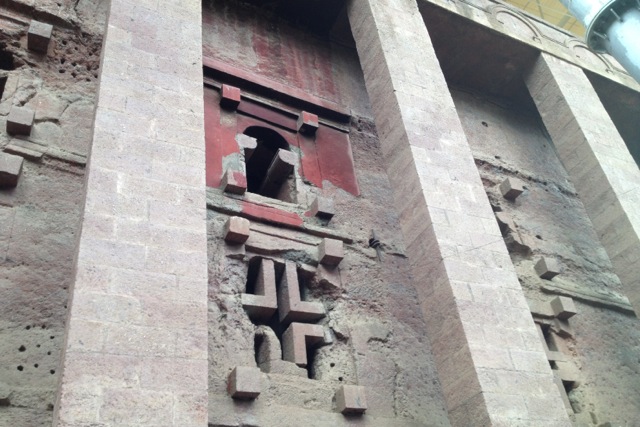
Although the churches have not been definitively dated, they are generally thought to have been constructed during the reign of King Lalibela during the 12th and 13th centuries. There is also some disagreement over whether these buildings were designed to be used as churches at all2 – there is a school of thought that King Lalibela found these buildings already constructed and adapted them for use as churches.
However, and for whatever reason, the churches came into being, visiting them is an incredible experience. We usually prefer self-guided sightseeing, but we hired a guide to take us around Lalibela and thought it was well worth our money. He shared interesting information with us throughout the day – and prevented us from getting lost in the narrow passageways or stumbling in the dark tunnels!
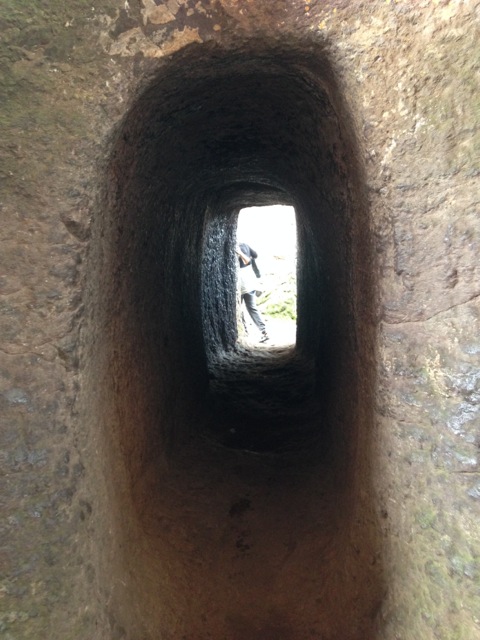
We started our tour with the Northern cluster of churches: Biete Medhani Alem (House of the Saviour of the World), which is believed to be the largest monolithic church in the world, Biete Mariam (House of Mary), Biete Maskal (House of the Cross), Biete Denagel (House of Virgins), and Biete Golgotha Mikael (House of Golgotha Mikael).
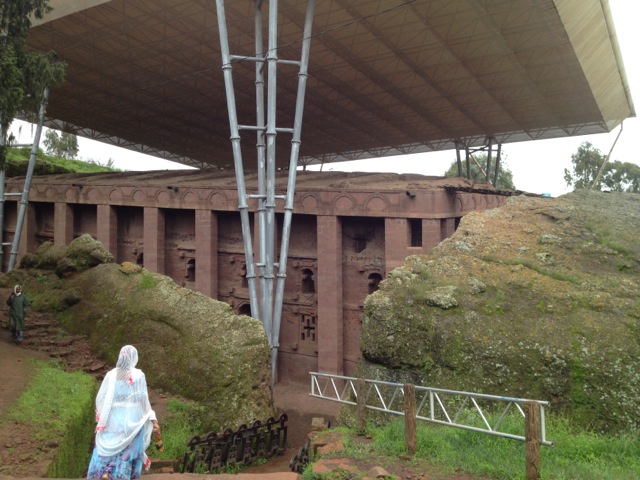
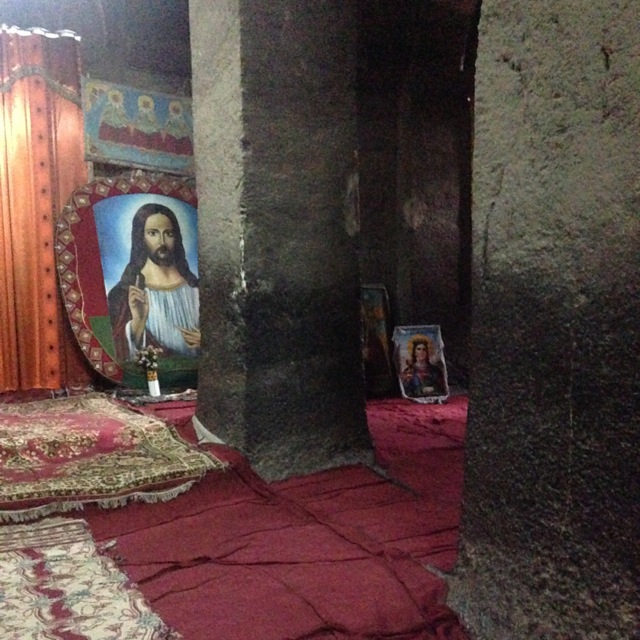
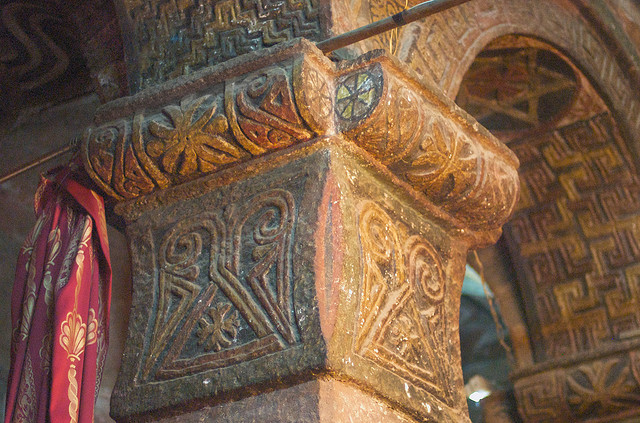
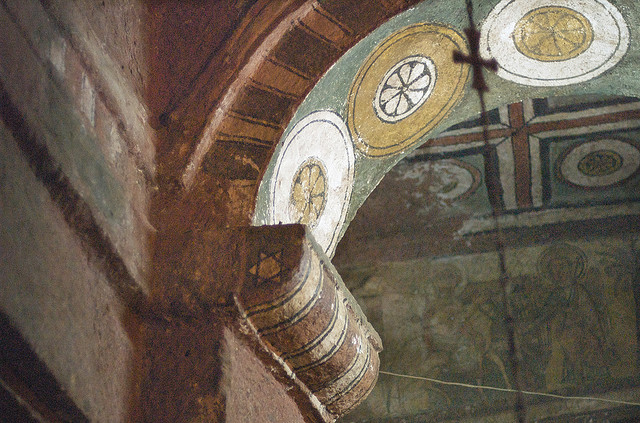
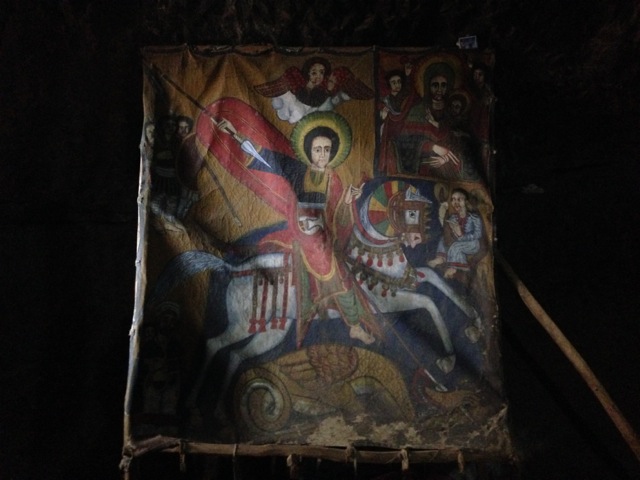
We broke for lunch before visiting the Southern cluster of churches. It was raining by the time we regrouped, but we persevered on our tour regardless. The rain didn’t bother us much: as you can see from the above picture of Biete Medhani Alem, the churches are largely kept under protective roofing installed by UNESCO.3 These mostly shielded us from the rain.
The biggest problem the rain posed for us was making the stone paths between churches a little slippery. Because the paths were generally narrow, slanted, and vaguely perilous, there were a few near-falls on our afternoon visit.
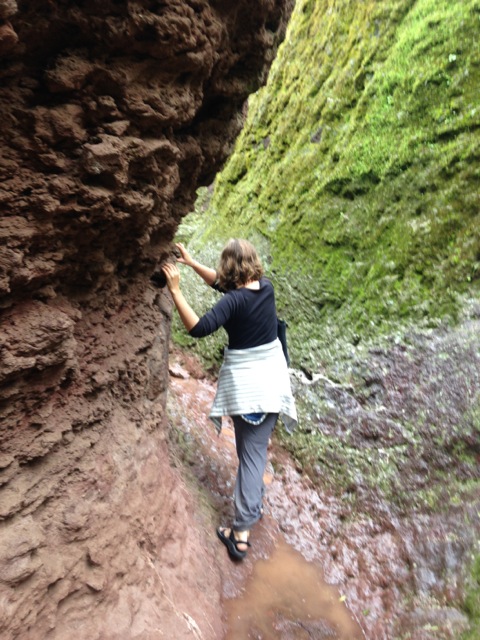
The Southern cluster of churches consists of: Biete Amanuel (House of Emmanuel), Biete Qeddus Mercoreus (House of St. Mercoreos), Biete Abba Libanos (House of Abbot Libanos), Biete Gabriel Raphael (House of Gabriel Raphael), and Biete Lehem (House of Holy Bread).
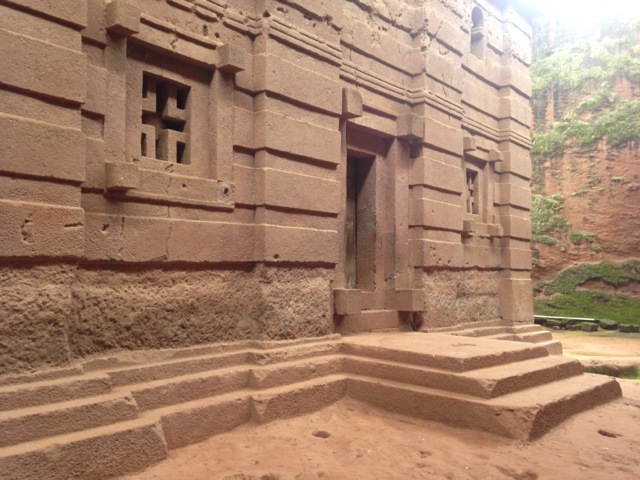
Strangely enough, walking around the Southern cluster included a trip through Hell. Between two of the churches is a pitch-black tunnel that is supposed to represent going to Hell. The tunnel is approximately 250 meters long, and our guide wouldn’t let us use our light inside it. (No flashlights in Hell! Seriously, though, it would have ruined the experience if we had used a flashlight.)
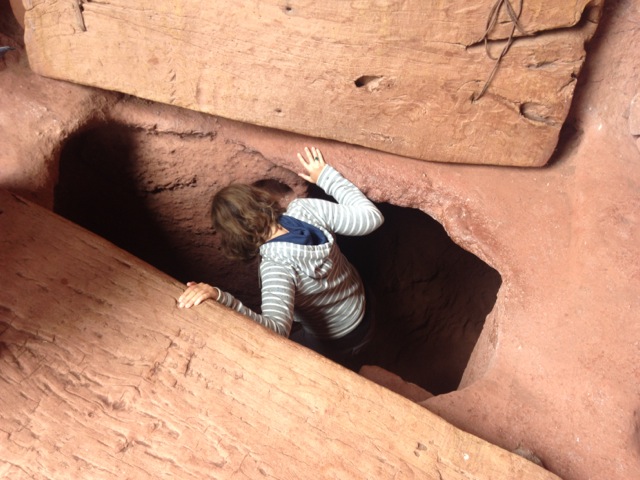
Finally, we made our way to the real show-stopper: Biete Giyorgis (Church of Saint George).
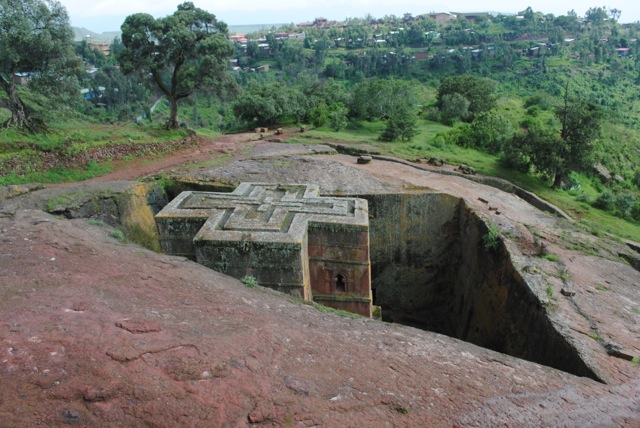
Luck was on our side, and the weather cleared up by the time we reached the Church of Saint George. The blue sky and sunshine made for some great pictures.
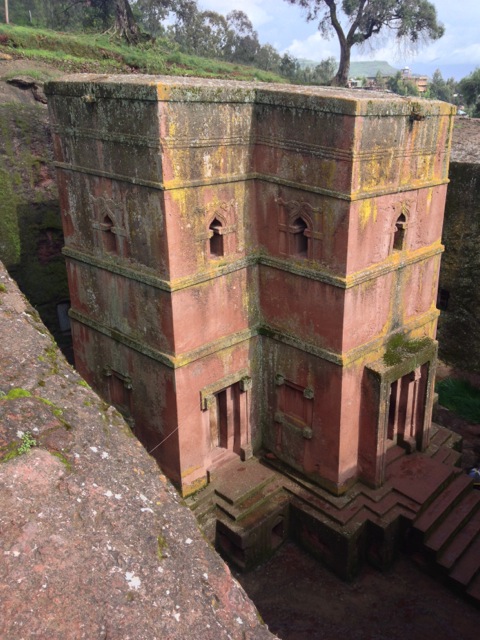
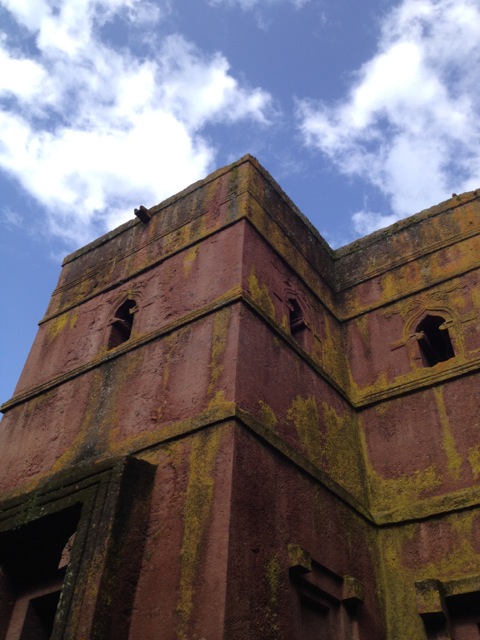
One of the more fascinating (and unexpected) things that we saw at Lalibela were the hermit holes. Apparently, many hermits would live in seclusion around the churches – inside these small holes in the walls. In modern times, the hermits have moved to less primitive, but still spartan, accommodation in a less-touristy part of the church complex.
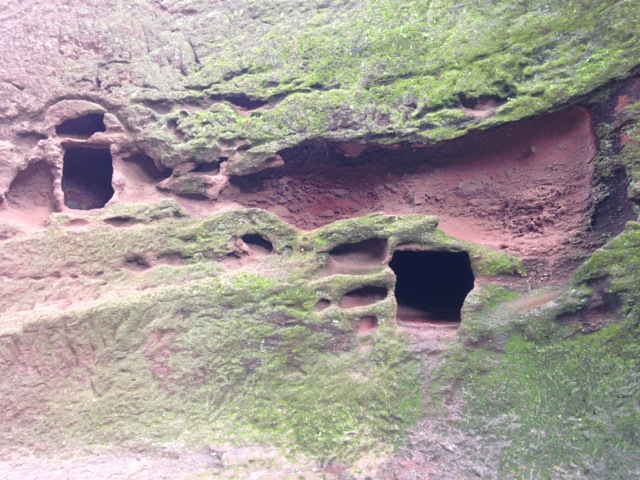
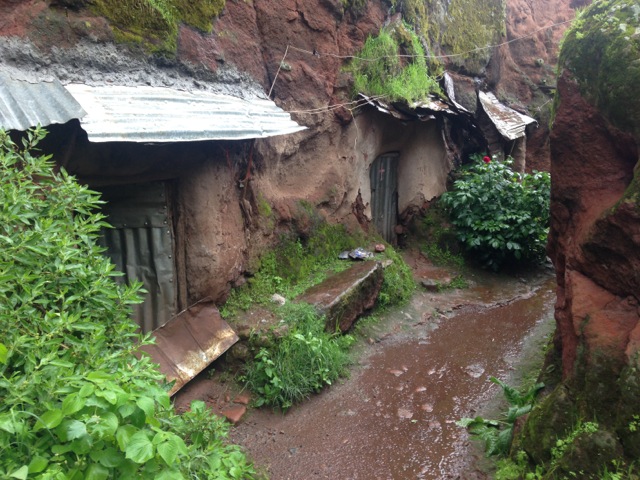
The rock-hewn churches are incredible and understandably the reason that most tourists come to Lalibela, but I would be remiss if I didn’t mention the scenery. We could have stared out at the picturesque mountains and valleys all day.
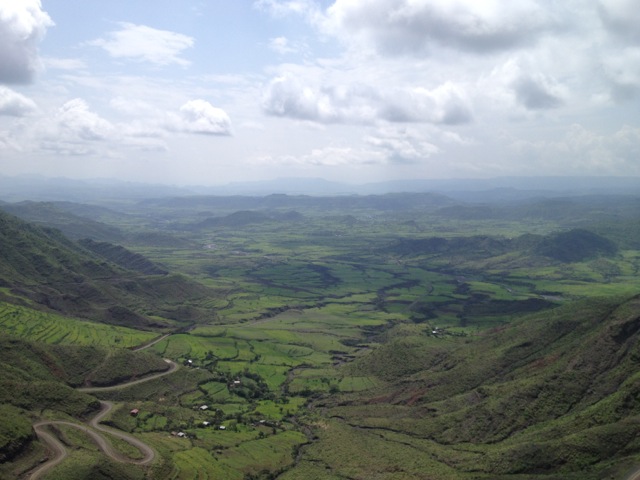
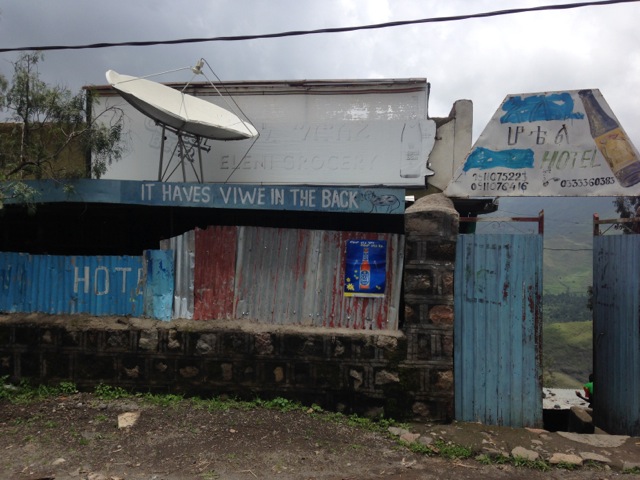
Where We Stayed:
☆ Top Twelve Hotel. Four goats. Great views, comfortable beds, friendly staff. We had some issues with electricity in our room, and then they started renovating the room next to ours very early in the morning. (But, as the guy explained, it was the off-season and they had to do the renovations sometime – we were the only people staying there at that point.)
Where We Ate:
☆ Mountain View Lodge. Located not far from our hotel, we ate dinner here every night that we were in Lalibela. The food was decent, but nothing to write home (or a blog) about.
☆ Ben Abeba. This crazy restaurant spirals up and affords incredible views over the area. Go for the view, not the food – but the food is fine.

☆ Seven Olives. We had lunch here the day that we visited the churches at Lalibela. There was a fantastic grilled cheese sandwich on the menu. (Also, the menu featured pasta “topped with lives.” I know it was a typo, but LIVES.)
1 Pro tip: If you can, try to fly into Ethiopia on Ethiopian Airlines. Your international ticket makes you eligible for discounted fares on Ethiopian Airlines domestic flights. Our thirty minute flight from Gondar to Lalibela only cost ~$36 each and saved us from two days of bus/minibus travel.
2 King Lalibela also is to have said that they were constructed with the direct assistance of angels, so, you know.
3 Fun fact: Lalibela’s rock-hewn churches were one of only eight cultural sites included in UNESCO’s first inscription of world heritage sites in 1978.

